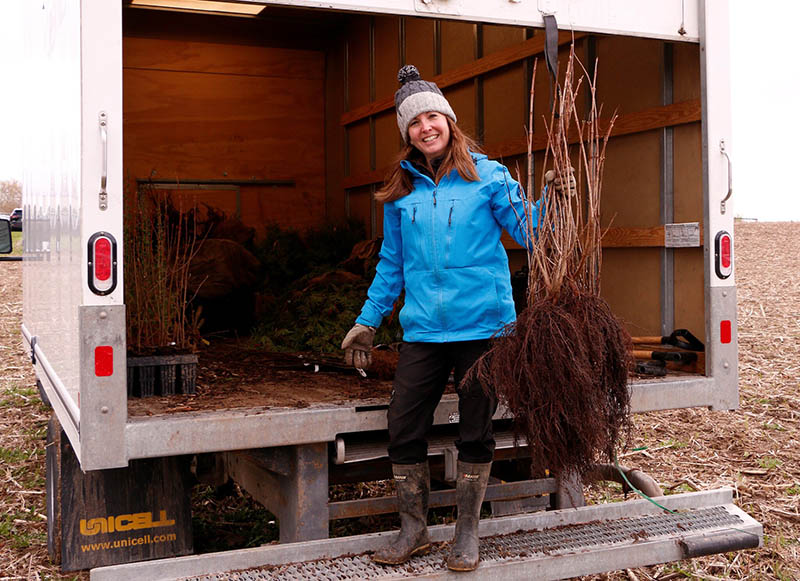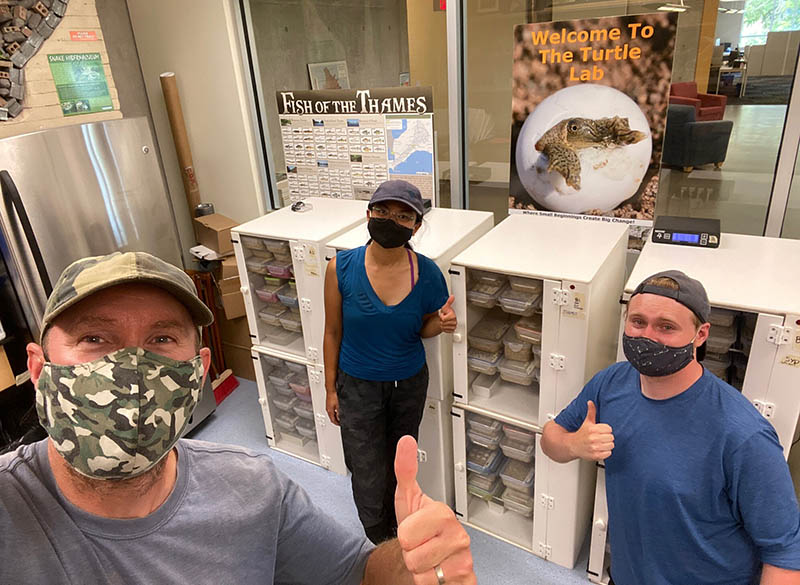2021 Year in Review (UTRCA Weekly, January 7, 2021)
As we settle into the New Year, the Upper Thames River Conservation Authority (UTRCA) is reflecting on some of its achievements in 2021.
Watershed residents continued to take enjoy the physical and mental health benefits offered by the outdoors, and we welcomed more than 160,000 visitors to Fanshawe, Pittock, and Wildwood Conservation Areas. While the camping season was closer to normal than the previous year, covid precautions and restrictions still impacted our operations.
Hundreds of students and community volunteers usually take part in many of our land stewardship projects. Despite the pandemic restricting volunteer involvement, thanks to the hard work of staff and our partners, we planted:
- 4,600 pollinator plants in the Town of St Marys, at school pollinator gardens, in Low Impact Developments (LIDs), and with the Friends of Stoney Creek;
- 100 aquatic plants; and
- 4,612 trees.

We ran the tenth annual London Hydro Tree Power and the first ever Festival Hydro Tree Power (Stratford) and Perth South Tree Power. These programs provide local residents with low cost native hardwood trees to plant on their property.
Landowner demand for trees was high for the second year in a row. In 2021, UTRCA staff assisted landowners in planting 44,330 trees, including the following:
- 40,040 seedlings,
- 2,905 large stock conifers, and
- 1,385 large stock hardwoods.
The Clean Water Program was also active, reviewing and funding 14 cover crop projects for rural land owners.
Fanshawe Community Education staff reached 8,112 students and 1,424 community members, both virtually (8,534 participants) and through in-person programs (1,002 participants) at Fanshawe Conservation Area, in London’s Environmentally Significant Areas (ESA), or in schoolyards.
Wildwood Community Education programs reached 1,100 students either virtually or in person. This total included 33 classes taking part in the new Water is Life virtual program; 61 Nature School participants; 80 people attending Nature Nearby Saturday; and 30 Sharing Christmas for the Animals participants.
Staff delivered the Stream of Dreams educational program to seven classes at A. J. Baker Public School, when in-person presentations were possible. Students and staff from local schools also helped to varnish more than 11,000 fish as part of the program.
The UTRCA also worked with community partners to hold four litter clean ups and two “moth ups,” a community initiative to remove LDD (gypsy) moth egg cases from trees.

Species at risk work continued, with Scott Gillingwater and his dedicated team incubating and releasing over 4,000 Spiny Softshell Turtle hatchlings, as well as over 2,000 hatchlings of other turtle species. They also rehabilitated and maintained critical habitat for various turtles at risk. This long-term monitoring and research program into some of watershed’s most at-risk species is vital in supporting the recovery of reptiles at risk in Ontario.
The UTRCA issued 14 flood bulletins to alert municipal flood coordinators and watershed residents of impending heavy rain, rising streams and rivers, significant snow melt, and boating bans. While most of the eight flood events were relatively minor, the September flood was the watershed’s most significant flood event since before the pandemic.
New in 2021 was this weekly blog initiative! Since launching the first blog in February, we’ve published 46 posts. As always, if you have a story or suggestion for our blog, please let us know!